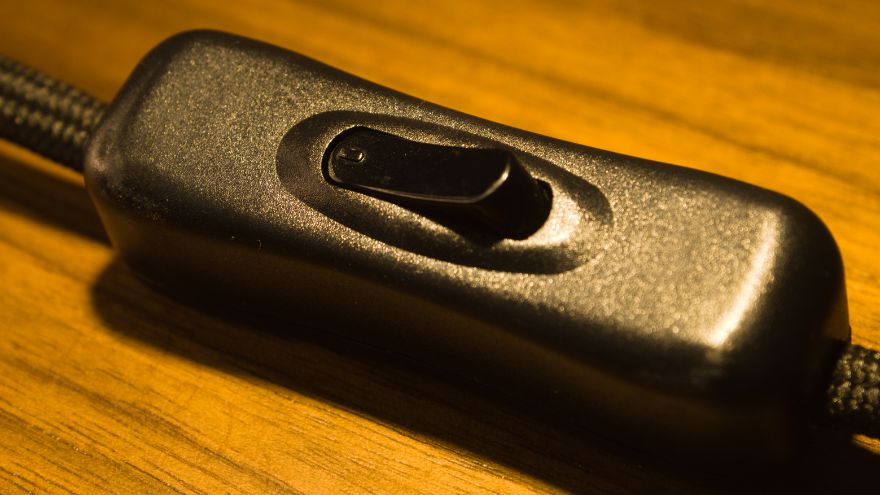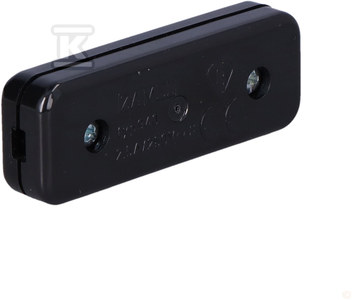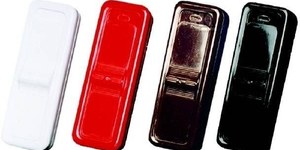A pass-through switch, also known as a pass-through switch or a lamp switch, is a compact and inexpensive element that can be used to control lighting in a house, apartment or company. Mounted on a cable, it increases the functionality and aesthetic value of the lamp. There are various types of feed-through switches to choose from. What are the differences between individual models? When should you use a feed-through switch? And what should you pay attention to when installing it?

Check the feed-through switches at the Onninen wholesaler
What are the differences between feed-through switches?
Electrical installation shops and wholesalers offer various types of feed-through switches. Most of them are universal devices, mounted with a cable. Thanks to their simple operating mechanism, they allow you to conveniently turn on and off electrical devices and lighting fixtures connected to the power supply, e.g. wall lamps, table lamps or furniture lighting.
When choosing a feed-through switch for the planned project, it is worth paying attention to:
- IP protection level - this parameter indicates the luminaire's resistance to moisture and dust, e.g. IP20 tightness class means a product intended for use inside buildings, at a safe distance from a water source;
- material of manufacture - pass-through switches are usually made of plastics, e.g. polypropylene (PP), which of course does not mean that all plastic models will offer the same quality and durability;
-
 input voltage – e.g. 220-240 V;
input voltage – e.g. 220-240 V; - rated current – e.g. 2.5 A;
- minimum service life - it is worth choosing a product tested for many thousands of switches on and off;
- mounting method – e.g. using a screw clamp;
- design and size - the cable is usually visible, so try to match the dimensions, colors and style of the pass-through switch to the aesthetics of the lamp and the overall interior design (most products offer a universal, black or white finish, but there are also models designed e.g. in a retro atmosphere );
- cable cross-section – make sure that the selected switch is compatible with your cable, e.g. 2x 0.75 mm or 3x 0.75 mm;
- quality – check whether the selected pass-through switch has a sufficiently long warranty, whether it has a solid structure, is made of durable materials, etc.
Where is a pass-through switch useful?
Pass-through switches are suitable for homes, apartments and offices. They are useful wherever simple and convenient operation of small electrical devices is required. Their installation allows you to easily turn the lamps on and off - without the need to carry out renovations, interfere with the electrical installation in the walls and constantly operate the cable. It's easy to imagine how tedious it would be to connect and disconnect the plugs of all the table lamps every day. The feed-through switch is often used in DIY projects. It gives an individual character and expands the functionality of home appliances, e.g. bedside lamps. It is also useful in repair work, e.g. of a damaged extension cord.
What should you remember when installing a feed-through switch?
 First of all, remember that you are working with electricity. So if you do not have the appropriate electrical qualifications, make sure that the feed-through switch you buy offers easy, self-assembly. If such information is not available for a given product, consult the purchase with the seller or specialist. Always follow the manufacturer's instructions for both your current breaker and your electrical appliance. Some companies create and share instructional videos on their websites.
First of all, remember that you are working with electricity. So if you do not have the appropriate electrical qualifications, make sure that the feed-through switch you buy offers easy, self-assembly. If such information is not available for a given product, consult the purchase with the seller or specialist. Always follow the manufacturer's instructions for both your current breaker and your electrical appliance. Some companies create and share instructional videos on their websites.
Feed-through switches at the Onninen wholesaler
In the Onninen electrical wholesaler you will find loop switches with various parameters, coming only from renowned suppliers of residential, office and electronics equipment. Our assortment includes, among others: Zamel feed-through switches – a Polish manufacturer with over 30 years of experience in the electrical industry.